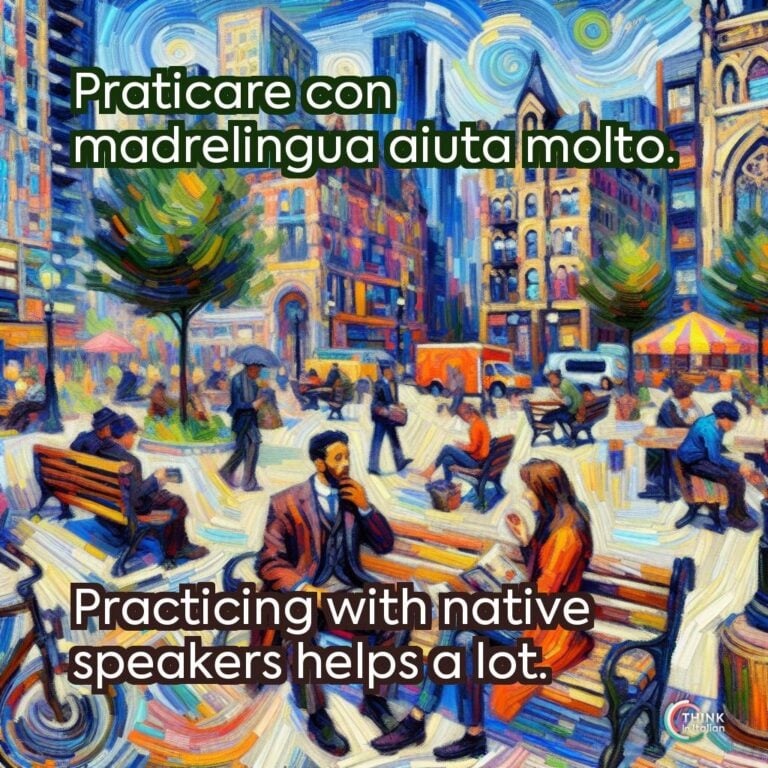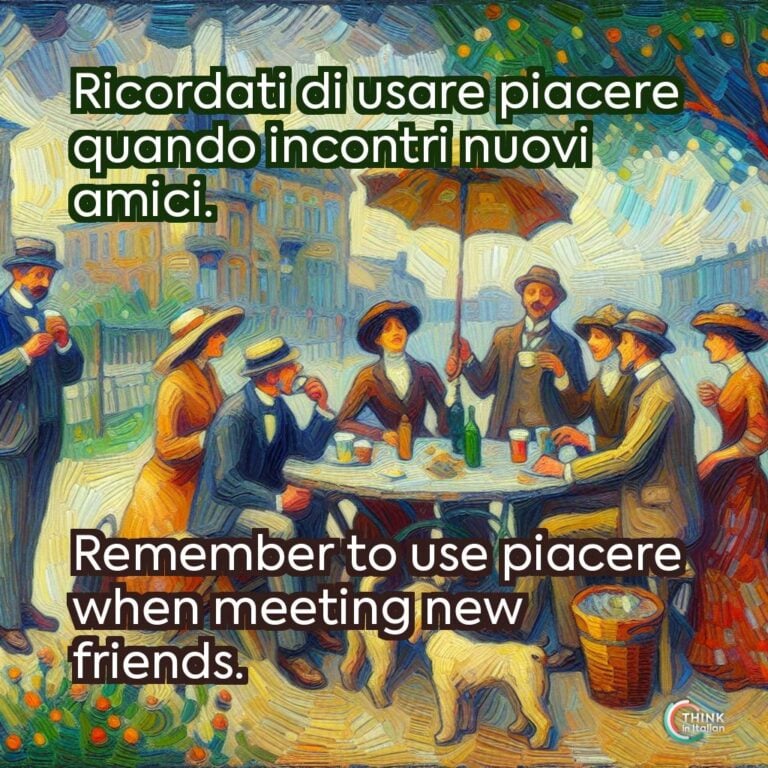“Nice to Meet you” in Italian
“Nice to meet you” is undoubtably one of the first things you say when you meet someone new. And if you are considering going to Italy, I am sure you will meet lots of new people.
Being able to start a conversation in Italian is an important step in your Italian learning path. In fact, conversations hold an important role in Italian culture: they are a way to build and strengthen relationships, to exchange information, and to connect on a deeper emotional level.
The literal translation of “it’s nice to meet you” is “è un piacere conoscerti“, but no Italian would say it like that. Let me guide you through discovering the different ways you can say “nice to meet you” in Italian.
Informal Expressions
There are two main ways you can informally say “nice to meet you” in Italian. The first is very similar to the literal translation of the English expression:
Piacere di conoscerti.
Nice to meet you.
As you can see, a direct object pronoun is used to address the informal interlocutor tu. In this case, the pronoun is placed at the end of the verb because the verb is infinitive.
A second way you can introduce yourself is by using piacere only and skip the rest:
Piacere, sono John.
Nice to meet you, I’m John
Alternatively, you can say molto piacere, which means you’re very glad to meet the person you’re talking to.
Molto piacere, sono Marta.
It’s very nice to meet you, I’m Marta.
Formal Expressions
Whether the expression is formal or informal depends on the direct pronoun. Therefore, before you read further, try to guess how you can say “nice to meet you” in a formal way in Italian.
If you said piacere di conoscerla you guessed right.
Of course, we use the third person singular direct pronoun, because we address to the formal lei, the courtesy form that Italians use when they want to show respect to someone.
Piacere di conoscerla, signora Merlo.
Nice to meet you, madam Merlo.
An even more formal expression is sono lieto di conoscerla (I’m glad to meet you). However, this expression is obsolete and used in rare situations.
How to Answer
Finally, how do you answer when someone tells you “nice to meet you” in Italian?
Also in this case, there are different alternatives: we have a standard sentence (il piacere è mio) that can be enriched to sound extra formal (il piacere è tutto mio), or a shortened expression commonly used in informal situations (piacere mio).
Piacere di conoscerla, avvocato.
Nice to meet you, lawyer.
Il piacere è tutto mio, signor Luigi.
It’s my pleasure, Mr. Luigi.
Practice Makes it Perfect
As easy as it is, all the ways you can translate “nice to meet you” to Italian derive from a single expression which can be shortened or modified depending on the context.
But how do you figure out which form best suits your situation? Simple: through practice. If you have the precious chance to engage in conversations with Italian native speakers, do so! Listen and repeat what they say to practice with the pronounciation and to understand the right contexts.
If you cannot surround yourself with an Italian speaking environment, then take advantage of our audio lessons, focused on listening and repetitions.
The more you try to speak Italian and engage in real-life conversations, the more you’ll interiorize these nuances without needing an explanation.
Give it a try, and let me know how it goes!






